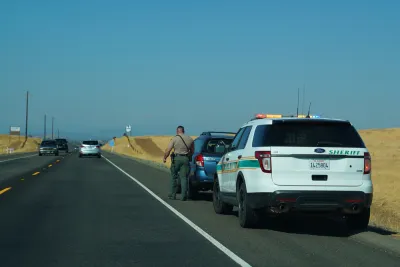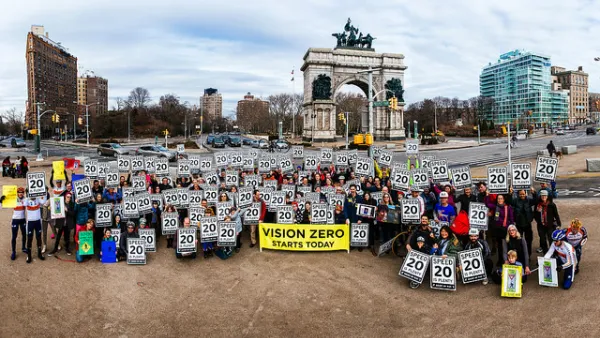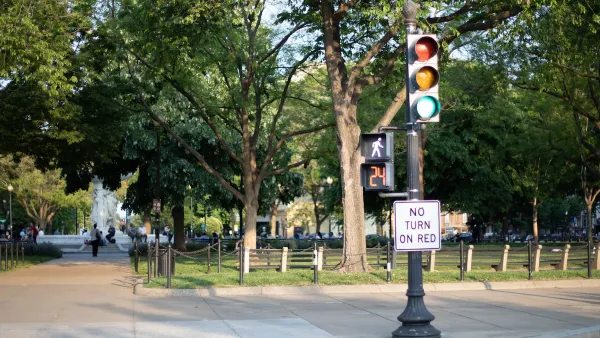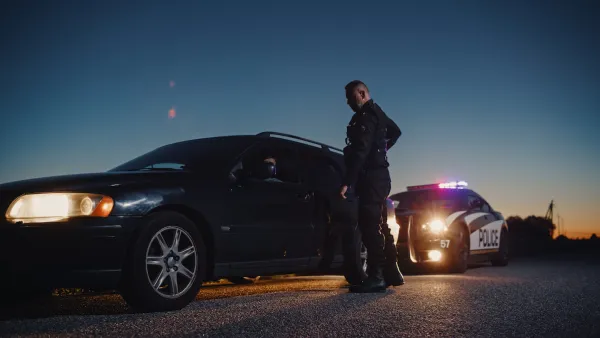While cars are still equated with freedom of mobility and personal liberty, they've also offered courts the chance to expand police powers in the public realm, time and time again.

Sarah A Seo, author of Policing the Open Road, writes for The Atlantic on the implications raised by police powers over motorists traveling the public realm in their vehicles.
Seo describes the fundamental conflict under study in this article thusly:
Officers’ power is fundamentally at odds with the notion of freedom on the open road. In American culture, driving is an expression of personal liberty. But under the law, driving is a privilege, not a right, and drivers are subject to extensive police surveillance.
It's a paradox, according to Seo, and one that the justice system continues to wrestle with, but largely doesn't interfere with the advancement of police power. The Supreme Court recently "punted" on a decision, according to Seao, in the case Mitchell v. Wisconsin, deferring to police discretion. It was hardly the first court to do so, according to Seo: "Even as Americans have built a society around cars, judges have abdicated their role of limiting law enforcement’s power over people’s daily lives."
Seo is not advocating that the state relinquish regulatory control over the safe and legal operation of motor vehicles when so many lives are at stake, but writes to raise the question of how many regulatory strings are too many.
FULL STORY: On the Road, Police Power Has Few Limits

National Parks Layoffs Will Cause Communities to Lose Billions
Thousands of essential park workers were laid off this week, just before the busy spring break season.

Retro-silient?: America’s First “Eco-burb,” The Woodlands Turns 50
A master-planned community north of Houston offers lessons on green infrastructure and resilient design, but falls short of its founder’s lofty affordability and walkability goals.

Delivering for America Plan Will Downgrade Mail Service in at Least 49.5 Percent of Zip Codes
Republican and Democrat lawmakers criticize the plan for its disproportionate negative impact on rural communities.

Test News Post 1
This is a summary

Test News Headline 46
Test for the image on the front page.

Balancing Bombs and Butterflies: How the National Guard Protects a Rare Species
The National Guard at Fort Indiantown Gap uses GIS technology and land management strategies to balance military training with conservation efforts, ensuring the survival of the rare eastern regal fritillary butterfly.
Urban Design for Planners 1: Software Tools
This six-course series explores essential urban design concepts using open source software and equips planners with the tools they need to participate fully in the urban design process.
Planning for Universal Design
Learn the tools for implementing Universal Design in planning regulations.
EMC Planning Group, Inc.
Planetizen
Planetizen
Mpact (formerly Rail~Volution)
Great Falls Development Authority, Inc.
HUDs Office of Policy Development and Research
NYU Wagner Graduate School of Public Service





























